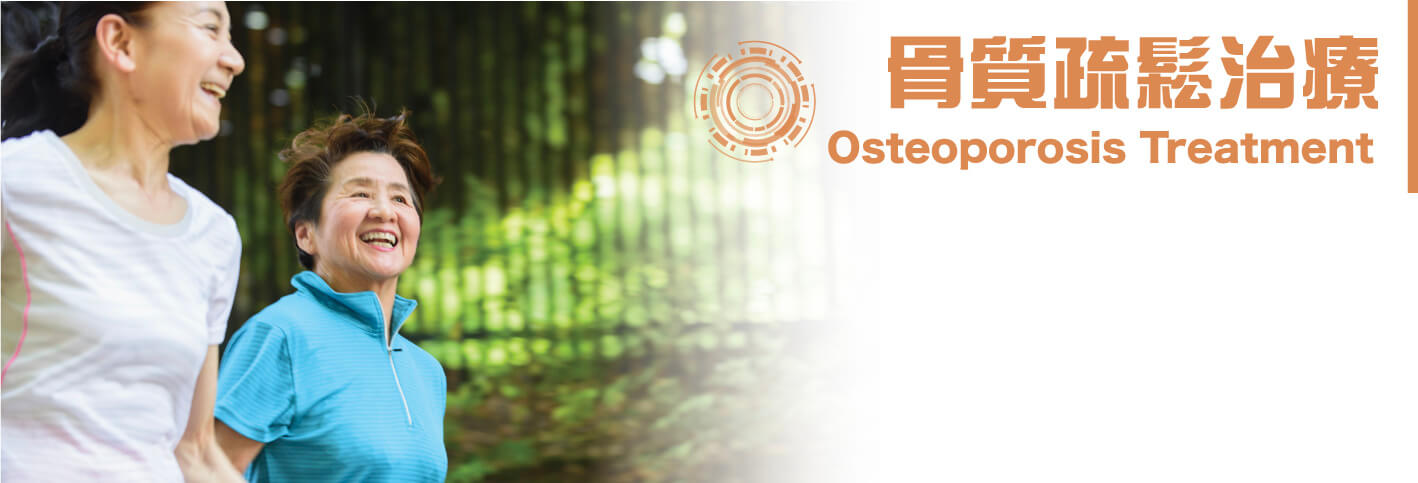
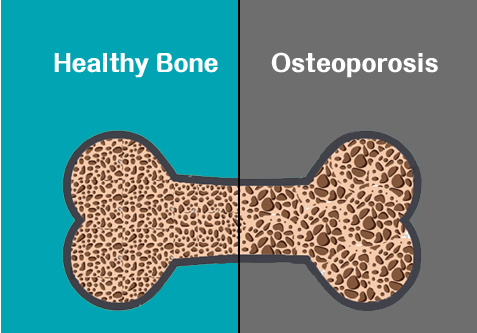
Osteoporosis is caused by the loss of tissue that makes up the bone structure, which enlarges the pores between the bone tissues, and the texture of the bone becomes fragile and brittle.

The appearance of the bone block seems to be fixed, but in fact the bone tissue is in constant renewal for a long time. Osteoblasts in the body are responsible for synthesizing new bone and osteoeroses are responsible for eroding old bone. Ageing and hormonal changes will aggravate bone erosion, while bone formation will slow down so that bone density cannot be maintained.
Osteoporosis itself does not have any symptoms. When pain occurs, there is often a fracture. After the age of 50, 1 in 3 women or 1 in 5 men will suffer from osteoporosis. Patients with osteoporosis may suffer from fractures due to minor collisions or falls. The most common fracture sites include femur, spine and forearm bones, which can lead to hip fractures, lumbar spine fractures and wrist fractures. Among them, the consequences of hip fracture are the most serious. The hip bone supports most of the activities of the lower body parts. Hip fracture can lead to inconvenient movement and even disability. Up to 20% of hip fracture cases will die within one year after the fracture .
You can follow the doctor's instructions to scan a designated location or the whole body with X-rays through Dual Energy X-ray Densitometry (DEXA). This test can confirm whether you have osteoporosis without anesthesia or invasion of the body. In addition, through the ultrasonic osteoporosis screening device, the system can simply scan and analyze at the wrist position, 2-minute radiation-free bone scan can be used for bone density screening and analysis for people of any age, whick leads to accurate High matching rate with hospital/laboratory results. The process does not require X-ray assistance to avoid radiation absorption. As the age increases, the lower the T value calculated by bone density examination, the higher the risk of fracture.
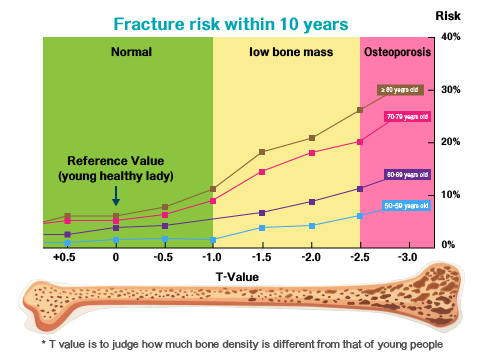
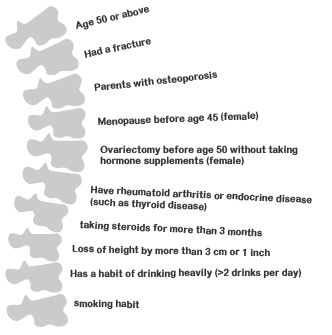
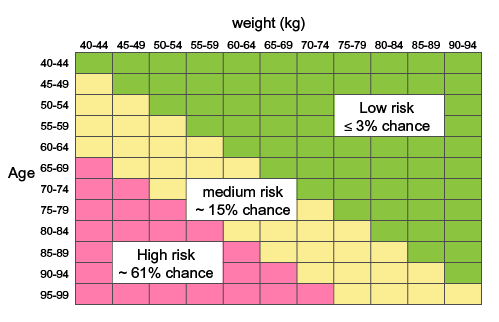
In the study of osteoporosis, the medical community has recently discovered that the human body contains a protein called "osteoporin" (OPG), which is an essential substance responsible for preventing bone loss. Prolia® injection mimics the function of the human body's natural "osteogenin," inhibits osteoclast activity, prevents bone loss, and aids in the battle against osteoporosis.
| Prolia® | Bisphosphonates | |
| medical status |
New medicine (launched in 2010s) It has been recognized by health regulatory organizations in many countries in Europe, the United States and Australia |
Traditional medicines (the first oral bisphosphonates introduced in the 1970s) |
| Effect |
- More than 10 years of clinical evidence - Faster response than oral bisphosphonates - Increased bone density for more - Reduce fracture risk by up to 70% |
- clinically proven - Not allowed to be taken for more than 5 years - Can increase bone density and reduce the chance of fracture |
| Instructions | Subcutaneous injection every six months |
- Orally once a week
- Note: Oral bisphosphonates should be taken on an empty stomach and with a large glass of water.
- Do not lie down, eat or take other medicines within half to one hour after taking the medicine.
- Not suitable for prolonged bed rest or gastroesophageal reflux patients.
|
| Theory behind |
Imitates the function of the human body's natural "osteogenin" to prevent the process of bone erosion, Prevent osteoclasts from forming, functioning and surviving
|
Attached to the bone, causing osteolytic cells to lose their bone-breaking ability, and will accelerate the death of osteolytic cells, but can not inhibit the formation of osteolytic cells. |
Price:$4,320
*This medicine is prescribed by doctor. For inquiries, please call ![]() 3585 8533。
3585 8533。

完成測試後,有機會獲免費骨質密度檢查 (DEXA) 乙次 或 骨質密度檢查優惠券乙張
閣下資料將會用作此推廣活動聯絡用途,如因資料有誤而未能聯絡閣下,本公司一概不負上任何責任。